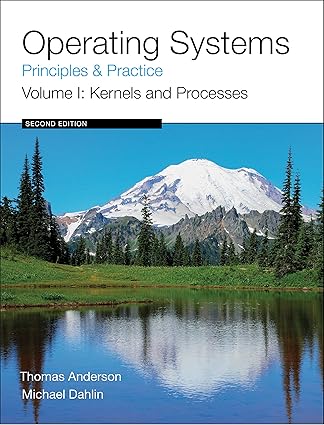A Deep Dive into UNIX/Linux Systems Programming
Introduction
The UNIX/Linux environment has been a cornerstone of computing for decades, offering a powerful and flexible platform for software development. Understanding the underlying principles and system programming techniques is essential for building robust and efficient applications. This white paper will delve into key concepts from three seminal works in the field:
- Advanced Programming in the UNIX Environment, 3rd Edition by W. Richard Stevens
- Operating Systems: Principles and Practice by Abraham Silberschatz, Peter Baer Galvin, and Greg Gagne
- The Linux Programming Interface: A Linux and UNIX System Programming Handbook by Michael Kerrisk
Key Concepts and Techniques
1. Process Management
- Process Creation and Termination:
- fork, vfork, and exec system calls.
- Process states and the process lifecycle.
- Process Control:
- wait, waitpid, and signal handling.
- Process groups and sessions.
- Inter-Process Communication (IPC):
- Pipes, FIFOs, message queues, shared memory, and sockets.
- Synchronization mechanisms (semaphores, mutexes, condition variables).
2. Memory Management
- Virtual Memory:
- Page tables, translation lookaside buffer (TLB), and memory-mapped files.
- Memory allocation and deallocation.
- Memory Protection:
- User and kernel space.
- Memory access permissions.
- Memory Mapping:
- Mapping files into memory for efficient I/O.
- Shared memory for IPC.
3. File System Operations
- File System Structure:
- Inodes, blocks, and directories.
- File I/O:
- open, read, write, close, lseek, and stat.
- File permissions and ownership.
- File System Access Control Lists (ACLs):
- Managing file access permissions.
4. Input/Output (I/O)
- Standard I/O:
- stdin, stdout, and stderr.
- Buffered and unbuffered I/O.
- File I/O:
- System calls for reading and writing files.
- Network I/O:
- Sockets and network programming.
- Asynchronous I/O.
5. System Calls and Library Functions
- System Calls:
- Direct interface to the kernel.
- Examples: open, read, write, fork, exec, kill, signal.
- Library Functions:
- Higher-level abstractions over system calls.
- Examples: printf, scanf, malloc, free, fopen, fread, fwrite.
Practical Applications and Real-World Use Cases
- Shell Scripting:
- Writing shell scripts to automate tasks.
- Using shell scripting to control system processes.
- System Administration:
- Managing system resources and configuration.
- Troubleshooting system issues.
- Network Programming:
- Developing network applications using sockets.
- Implementing client-server architectures.
- Embedded Systems:
- Writing device drivers and firmware.
- Optimizing code for resource-constrained environments.
- High-Performance Computing:
- Designing and implementing parallel and distributed algorithms.
- Optimizing code for performance and scalability.
References
- Advanced Programming in the UNIX Environment, 3rd Edition by W. Richard Stevens
- Operating Systems: Principles and Practice by Abraham Silberschatz, Peter Baer Galvin, and Greg Gagne
- The Linux Programming Interface: A Linux and UNIX System Programming Handbook by Michael Kerrisk
- The Linux Kernel Documentation: A comprehensive resource for kernel internals.
- The Open Group Base Specifications Issue 7: A formal standard for UNIX systems.
- POSIX Standards: A set of standards for portable operating systems.
Conclusion
By mastering the concepts and techniques presented in these books, you can become a proficient UNIX/Linux systems programmer. A solid understanding of process management, memory management, file system operations, I/O, and system calls is essential for building robust and efficient applications. By leveraging the power of the UNIX/Linux environment and the knowledge gained from these resources, you can tackle a wide range of system programming challenges. Contact ias-research.com for details.



